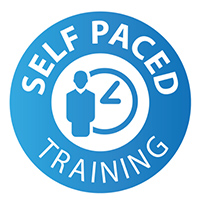Introduction
About Python • The Python World • Which version? • Python Implementations • Jupyter Notebook • The Python Shell • Running Python Programs from a File • The Python Command Line • IDLE • The Zen of Python
Language Basics
Numbers • Strings • Type Conversions • Built-in Functions • String Index • String Slice • String Methods • Find and Replace • Splitting Strings • Simple Formatting
Control Statements
Comments • if Statements • Comparison and Boolean Operators • Conditional Expression • Operators • for Statements • break • continue • while Statements • assert Statements • Functions • global Variables • nonlocal Variables • Lines and Continuation • IDLE
Lists, Tuples, and Dictionaries
Lists • Length, Concatenate, Repeat • Append, Insert, Pop, Extend, Remove • Index • Loops and Lists • Sorting Lists • List Comparison • Tuple• Dictionaries • Sets
Formatting
Formatting Strings • Field Width, Justification, Padding • Number Base, Comma, Sign • Floating Point
Files and Exceptions
Reading Standard Input • Writing to a File • Writing Files using Print • Reading from a File • Variations • Readline ("C-style") • Exceptions • Context Manager
Classes
Classes and Objects • Classes and Methods • Constructors • Adding Data Attributes to an Object • Class Variables and Instance Variables • Class vs Object vs Function vs Method • The LEGB Scope Rule • Documentation Strings
Inheritance
Inheritance • Overriding Methods • Overriding the Constructor • Virtual Method Calls • Multiple Inheritance • Testing Class Relationships • Tying Variables to a Class • Duck Typing
Copying Objects
Copying Instance Objects • Copying Lists • Assigning to a Slice • Shallow Copying
Magic Methods
Defining Magic Methods • int and round • str and repr • Some Useful Magic Methods
Iterators and Generators
Sequence, Iterator, Iterable • Iterable Unpacking • Generators • List Comprehensions • Generator Expressions • lambda • map • filter, enumerate • zip • join • Dictionary Comprehensions
Exploring Functions
Default and Keyword Arguments • Argument Lists • None • Type Hints • Functions as Objects • Higher-Order Functions • Decorator Pattern • A Useful Decorator • Closures
Modules
import • from ... import • __name__ • Running Modules from the Command Line • Packages • The Python Package Index • pip
The Standard Library
math • random • statistics • datetime • time • timeit • os • os.path • os.environ • shutil • glob • sys • subprocess
Regular Expressions
match • search • findall • Filter the Output from Another Program • sub • Basic Regular Expression Syntax
Argparse
Positional Arguments • Usage and Help • Option Arguments • Options with and without Values • Options with Optional Values • nargs • Description, Epilog, Help • Prefix, Choices, Required
Virtual Environments
Tools for Distribution and Installation • pyenv • pyenv - Multiple Versions • venv • Creating and Activating Virtual Environments • Sandboxing • pip freeze and Cloning • Version Pinning • pipenv • Running pipenv • Some pipenv commands • pipenv and Python Versions • --skip-lock and --ignore-pipfile • PyInstaller • PyInstaller Options • Further Tools
Test-Driven Development
What is TDD? • The TDD Process • The Four-Phase Test Pattern • Fakes and Test Doubles • pytest Architecture • A Simple Test • A Failing Test • Test Discovery • Tests in Classes • Testing Exceptions • skip and xfail • Test Summary • Running in a Temporary Directory • monkeypatch • Methods of monkeypatch • User-defined Test Fixture • pytest Good Practice
Extending Python with C
Extending Python • Numba • C Foreign Function Interface • Building and Running with cffi • Compiling from C Header and Source Files • Building from a Shared Object File • Pointers and Structures • ffi.new • To Distribute cffi with PyInstaller • Cython Language • Primes in Python • Primes in Numba • Primes in C • cffi Biuld Script • Primes in Cython • Compile with Cython • Check the Results • Compare the Speed
NumPy
The NumPy Array • A 2-D Array • More Dimensions • Initializing Arrays (1) • Initializing Arrays (2) • Arithmetic Series • Random Arrays • Copying the Shape of an Existing Array • reshape • Adding Dimensions • ravel • transpose • Sorting • Reduction Functions • Plotting a Function with Matplotlib
NumPy Broadcasting and Indexing
Elementwise Operations • Elementwise Compare • Other Elementwise Operations • Combining Array and Scalars • Broadcasting • Row and Column Vectors • Dot Product • Vectorizing a Function • Array-of-Indices • Indexing with Array-of-Booleans • Grids • Concatenate and Stack • Split • Tile
Matplotlib
Plotting with Lines, Colors and Markers • Text and Legend • Matplotlib APIs • Subplots • Subplots versus Figures in pyplot API • Log Axes • Types of Plot • Plotting a Histogram • Plotting an Array as a Grid • Scatterplot • Numpy meshgrid • 3-D Surface Plot • Other Python Plotting Packages • Plotting with Pandas • Plotting with Seaborn • Seaborn Pairplot
Pandas
Pandas • Pandas Data Structures • Pandas Series • Pandas DataFrame • index and columns • Basic Indexing - Series • Basic Indexing - DataFrame • loc and iloc • Slicing and Dicing • Copying and Concatenation • Querying a Dataframe • Adding Column to a Dataframe • reset_index, set_index, and reindex • Importing and Exporting Dataframes • Time Series and Alignment • Examining a Dataframe • Basic Statistics • Histogram • Plotting • Handling Undefined Data • Data Transformations • SQL-like Merge • Groupby • Hierarchical Index • Hierarchical Row and Column Indexes • Stack • Unstack • Pivot Table
Python 2 versus Python 3
Python 2 versus Python 3



